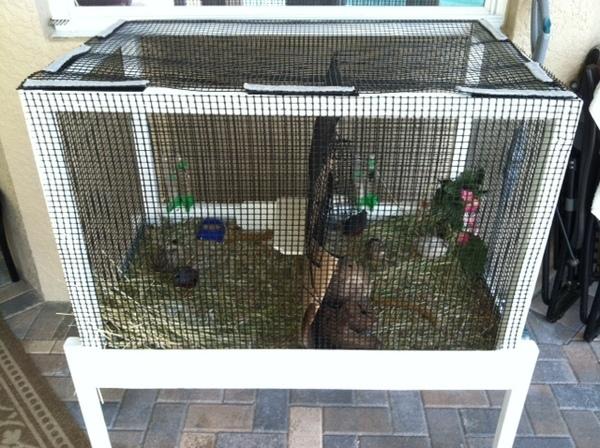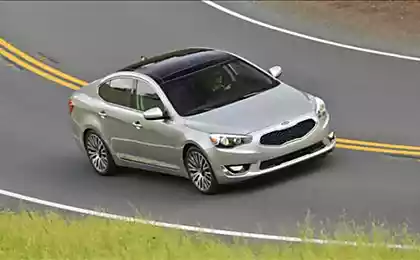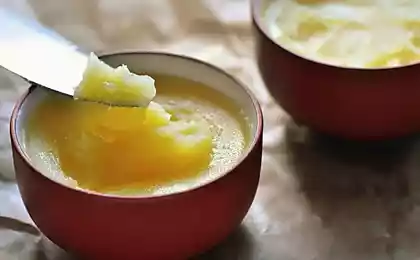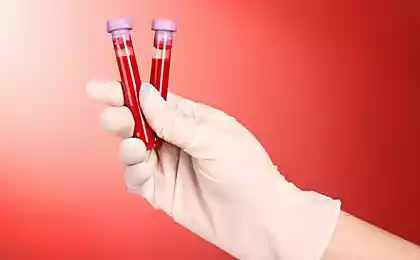812
Raising quail at home
Contain quail at home no more difficult than any other poultry. When a small amount of them can be kept even in an apartment in cages for parrots or Canaries. Maintenance and care is quite simple. The only condition for normal egg production of quail is the observance of detention conditions (temperature and light regimes), and the use of specially balanced, high protein food. In other respects they are quite hardy birds.

If you want to breed quails at home, the first thing You need to know is that domesticated female quail have lost the instinct of incubation, and the young animals are used artificial incubation of eggs, therefore you will need an incubator.Meat and eggs of quail are very tasty and healthy. Since ancient times in Russia, cook quail meat. In old Russian cookbooks have recipes of dishes such as quail with cherries, quail grilled quail with breadcrumbs. Especially appreciated by lovers of fine aroma and distinctive taste of quail meat, combined with the juiciness and tenderness. The substances that give a specific taste of quail meat, stimulate the appetite and increase the secretion of gastric juice.

For incubation of quail eggs are used in any small household incubators systems: "Universal", "Hen", ipkh, SILT-f-03 and others. These incubators can be bought in any market or specialty store.
The capacity of these incubators are different, and usually specified from the calculation of the number of eggs. Quail eggs in these incubators can log in to 4 — 6 times more than chicken. So, for example in the tray of the incubator "Universal-45" fits 370 — 395 eggs of the Japanese quail. For many poultry enthusiasts use for hatching quail eggs homemade incubators for industrial production may not be feasible as for their needs, such incubators are too big. So, for those who grow the young quails in small amounts, would be more suitable homemade incubators smaller capacity.

The incubation period of quail eggs is 17 days (from chicken — 21). The conclusion of these occurs is active and ends over 4 to 6 hours, although separate these from the same batch may hatch and after 1 — 2 days after the main output.
Just bred these common quails are covered with brown fluff with two pale stripes along the back. They are very agile, though the bulk of them at this time is only 6-8 g.

Healthy of these are grown in plywood or cardboard boxes. The sizes of the boxes depend on the number of these. If the number of quail you have a small and all output is 20 — 30 of these, for these purposes may be any suitable plywood box, such as standard mail order box. But if You are going to take perepelovodstvom, and therefore — independently and permanently disabling their Chicks, You'd better to make a universal bruderly box.
Boxes should be clean, the bottom is necessary to lay a clean paper, which must be changed in process of pollution. Of these out of the incubator immediately planted in a box at the bottom of which is a grid cell of 5 x 10 mm. This eliminates the appearance and development of these so-called "twine" when the feet of perepelica starting to disperse in different directions (grid at the bottom gives this to do it as a foot rest).

It is very important observe the temperature. These are very sensitive to temperature and the slightest cooling leads to an increased withdrawal of young animals.
These first hours after hatching, able to eat independently. In General, the whole life of these birds, with the first day focused on the absorption and feed search. Owing to the very rapid growth and development they require feed with a high content of protein, vitamins and minerals. In the first days of life they can be fed finely chopped boiled egg, cottage cheese, dusted with breadcrumbs, chopped herbs, and bird feed for young stock aged 1 to 10 days.
Grow these very fast. For two months they increase their mass by more than 20 times and almost reach the size of adult birds. For comparison, the chickens during the same period increase the mass of only 14 times, well before the adult birds have yet to grow and grow...

When the content of Japanese quail for the purpose of receiving food eggs usually use the cell height to 20 cm in the bottom Area depends on the number placed in the cage of quail and is selected from the calculation of 180 — 200 sq cm per head. If you need dietary eggs (i.e. unfertilized), then the cell can keep some chickens. Rush they will be the same as with cock.
For efficient use of space usually several of these cells are put one on another (like racks).
As all chicken, these quail are willing to bathe in dry sand that must be considered in their content and periodically put for this purpose in the cage tray with a layer of sand with a thickness of 5 — 7 cm.
The room in which the set of cages for quails, should be warm, dry, well-ventilated, providing fresh air.
The fresh air must be accompanied by a draft. One of the first signs of drafts — loss of the birds feathers.
In areas where adult quails, the relative humidity should be between 55 — 75 %. Optimum 60 — 70 %.
The temperature is maintained at 20 — 22°C, the permissible variation from 16 — 25°C.
Fed Japanese quails all types of feed grains with small or crushed grain, egg food and greens. Well they eat feed with a high content of protein, that positively affects their productivity. Feed added to the feeders regularly, as eating.

Quails fed 2-3 times a day. Feeders and waterers in the form of grooves, which strengthen the outside of the cells. For dry feed mixture it is advisable to use automatic feeders. In the bunker, which is fixed above the cells, the dry mixture is poured on a day or even several days. As eating food from the hopper through the tubes spilling into the trough.
For drinking you can also use automatic waterers, their preparation is quite simple — according to the principle of communicating vessels. Water they can fill in for a few days, but at least once a week before the new filling of water troughs should be thoroughly washed.
For succulents, you should have an extra feeder, also reinforced outside.
When the content 100 females quails daily feed consumption is 2.5 — 3 kg. For a month of feed will require about 90 kg. During this period, the quail will carry 2200 to 2300 eggs.

источник:helpower.narod.ru
Source: /users/1077

If you want to breed quails at home, the first thing You need to know is that domesticated female quail have lost the instinct of incubation, and the young animals are used artificial incubation of eggs, therefore you will need an incubator.Meat and eggs of quail are very tasty and healthy. Since ancient times in Russia, cook quail meat. In old Russian cookbooks have recipes of dishes such as quail with cherries, quail grilled quail with breadcrumbs. Especially appreciated by lovers of fine aroma and distinctive taste of quail meat, combined with the juiciness and tenderness. The substances that give a specific taste of quail meat, stimulate the appetite and increase the secretion of gastric juice.

For incubation of quail eggs are used in any small household incubators systems: "Universal", "Hen", ipkh, SILT-f-03 and others. These incubators can be bought in any market or specialty store.
The capacity of these incubators are different, and usually specified from the calculation of the number of eggs. Quail eggs in these incubators can log in to 4 — 6 times more than chicken. So, for example in the tray of the incubator "Universal-45" fits 370 — 395 eggs of the Japanese quail. For many poultry enthusiasts use for hatching quail eggs homemade incubators for industrial production may not be feasible as for their needs, such incubators are too big. So, for those who grow the young quails in small amounts, would be more suitable homemade incubators smaller capacity.

The incubation period of quail eggs is 17 days (from chicken — 21). The conclusion of these occurs is active and ends over 4 to 6 hours, although separate these from the same batch may hatch and after 1 — 2 days after the main output.
Just bred these common quails are covered with brown fluff with two pale stripes along the back. They are very agile, though the bulk of them at this time is only 6-8 g.

Healthy of these are grown in plywood or cardboard boxes. The sizes of the boxes depend on the number of these. If the number of quail you have a small and all output is 20 — 30 of these, for these purposes may be any suitable plywood box, such as standard mail order box. But if You are going to take perepelovodstvom, and therefore — independently and permanently disabling their Chicks, You'd better to make a universal bruderly box.
Boxes should be clean, the bottom is necessary to lay a clean paper, which must be changed in process of pollution. Of these out of the incubator immediately planted in a box at the bottom of which is a grid cell of 5 x 10 mm. This eliminates the appearance and development of these so-called "twine" when the feet of perepelica starting to disperse in different directions (grid at the bottom gives this to do it as a foot rest).

It is very important observe the temperature. These are very sensitive to temperature and the slightest cooling leads to an increased withdrawal of young animals.
These first hours after hatching, able to eat independently. In General, the whole life of these birds, with the first day focused on the absorption and feed search. Owing to the very rapid growth and development they require feed with a high content of protein, vitamins and minerals. In the first days of life they can be fed finely chopped boiled egg, cottage cheese, dusted with breadcrumbs, chopped herbs, and bird feed for young stock aged 1 to 10 days.
Grow these very fast. For two months they increase their mass by more than 20 times and almost reach the size of adult birds. For comparison, the chickens during the same period increase the mass of only 14 times, well before the adult birds have yet to grow and grow...

When the content of Japanese quail for the purpose of receiving food eggs usually use the cell height to 20 cm in the bottom Area depends on the number placed in the cage of quail and is selected from the calculation of 180 — 200 sq cm per head. If you need dietary eggs (i.e. unfertilized), then the cell can keep some chickens. Rush they will be the same as with cock.
For efficient use of space usually several of these cells are put one on another (like racks).
As all chicken, these quail are willing to bathe in dry sand that must be considered in their content and periodically put for this purpose in the cage tray with a layer of sand with a thickness of 5 — 7 cm.
The room in which the set of cages for quails, should be warm, dry, well-ventilated, providing fresh air.
The fresh air must be accompanied by a draft. One of the first signs of drafts — loss of the birds feathers.
In areas where adult quails, the relative humidity should be between 55 — 75 %. Optimum 60 — 70 %.
The temperature is maintained at 20 — 22°C, the permissible variation from 16 — 25°C.
Fed Japanese quails all types of feed grains with small or crushed grain, egg food and greens. Well they eat feed with a high content of protein, that positively affects their productivity. Feed added to the feeders regularly, as eating.

Quails fed 2-3 times a day. Feeders and waterers in the form of grooves, which strengthen the outside of the cells. For dry feed mixture it is advisable to use automatic feeders. In the bunker, which is fixed above the cells, the dry mixture is poured on a day or even several days. As eating food from the hopper through the tubes spilling into the trough.
For drinking you can also use automatic waterers, their preparation is quite simple — according to the principle of communicating vessels. Water they can fill in for a few days, but at least once a week before the new filling of water troughs should be thoroughly washed.
For succulents, you should have an extra feeder, also reinforced outside.
When the content 100 females quails daily feed consumption is 2.5 — 3 kg. For a month of feed will require about 90 kg. During this period, the quail will carry 2200 to 2300 eggs.

источник:helpower.narod.ru
Source: /users/1077
Sworkit is the app for home workouts with a huge database of exercises
The British branch of Nestle is to produce electricity from unsold candy























